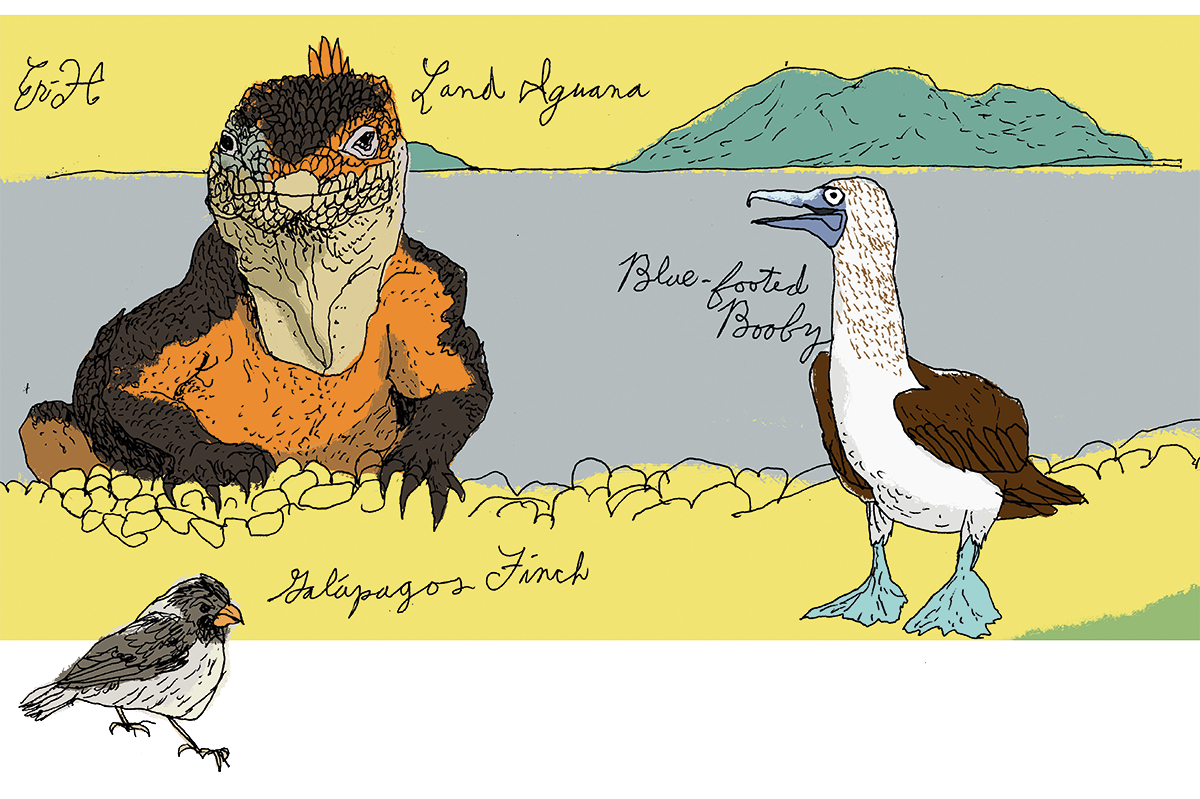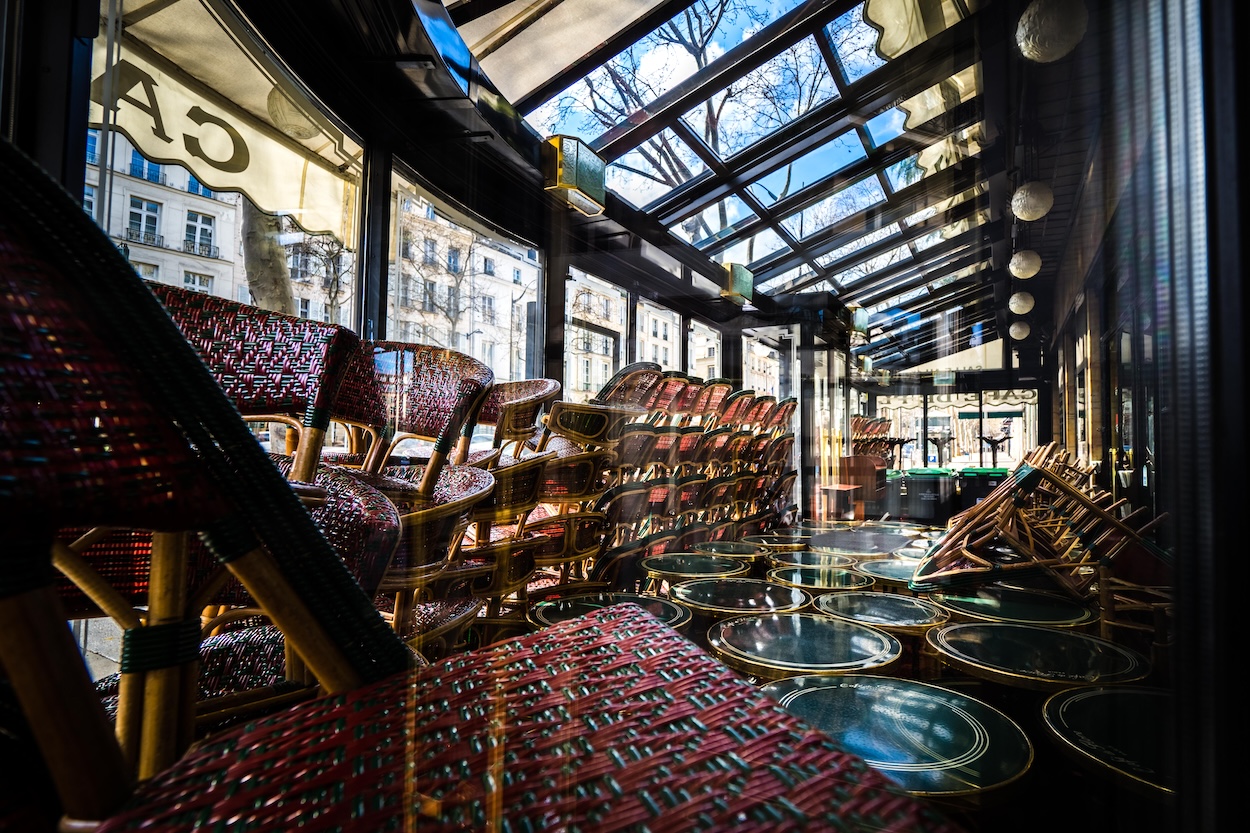Lonesome George, a Pinta Island giant tortoise, spent the latter half of his hundred years munching on cacti and roaming around the Charles Darwin Research Station on the Galápagos island of Santa Cruz. He borrowed his name from the 1950s American comedian and actor George Gobel and one of the three B-52 Stratofortresses that completed the first non-stop jet circumnavigation of the world in 1957. But the name was ultimately more fitting for the tortoise who was the last of a million-year-old species.
In 1959, fishermen introduced three goats to Lonesome George’s home of Pinta Island, one of the smallest islands of the Galápagos archipelago. Just ten years later, they had multiplied to around 40,000. This growth radically altered the island’s vegetation, which thus eradicated the rest of the already-beleaguered local chelonians. When scientists found Lonesome George in 1971, already all alone, they relocated him to a sanctuary on Santa Cruz with the hope that a female might be found to sustain his species. Sadly, none ever was, nor did he mate with the specially selected Española Island cousins that most closely matched his DNA.
While the Chelonoidis niger abingdonii line ended with his death in 2012, Lonesome George is still at home at the Charles Darwin Research Station. Instead of sunbathing in the harsh Pacific glare, however, he is stuffed and preserved, basking in the warm glow of a spotlight inside a giant glass case in a temperature-controlled, atmospherically sealed hall under a label calling him “A Symbol of Hope.” With his neck extended up and out as if he were reaching for a tantalizing berry (his evolutionary advantage given the saddle design of his shell), he is perfectly positioned for tourists like me to shuffle by and take a picture — no flash, of course.
Not many people think of the Galápagos Islands as a popular tourist destination like Maui or Mallorca. From Charles Darwin’s descriptions in his 1839 book The Voyage of the Beagle, they sound more like Saint Helena than Shangri-La. “Nothing could be less inviting than the first appearance,” he recounted, describing his first impressions of San Cristóbal, “a broken field of black basaltic lava, thrown into the most rugged waves, and crossed by great fissures, is everywhere covered by stunted, sun-burnt brushwood, which shows little signs of life.” He even said rather rudely that its volcanic craters “reminded [him] of those parts of Staffordshire, where the great iron-foundries are most numerous.”
In the 185 years since, however, the islands have become both a budding polity and a niche destination for the adventurous, nature-minded traveler. The pirates, prisoners and whalers of Darwin’s day have given way to around 32,000 Galapagueños living across four islands, and the arduous sea journey around Cape Horn has been replaced by daily commercial airline flights from the Ecuadorian cities of Quito, Guayaquil and recently Manta. With the favorable purchasing power of the US dollar, Ecuador’s official currency, American travelers can see the same animals that inspired Darwin’s revolutionary thought on the cheap.
My trip to the Galápagos certainly surpassed my high expectations. Within a day of traveling, I was sharing the boardwalk of Puerto Baquerizo Moreno in San Cristóbal with sea lions and iguanas who did not mind my human presence. Later in Puerto Villamil on Isabela Island, a snorkel trip to the lava tunnels brought me alongside sea turtles who rivaled me in size, reef sharks that remained just out of reach and unique blue-footed boobies that defied my preconceptions of what a bird should look and sound like. My trip was capped off by a visit to the Charles Darwin Research Station at Puerto Ayora on Santa Cruz, where I spent the day among its Galápagos giant tortoises, including the world-famous Lonesome George in his now-preserved form.
It’s no surprise to me that growth in tourism to the Galápagos has been staggering. In 2023, tourism surpassed pre-pandemic levels with around 300,000 visitors to the islands — over four times the number in 2000. This amounts to eight tourists per resident visiting the islands; in London the same year, the ratio was four to one. Yet as Lonesome George’s taxidermied corpse reminds us, there is a tension between the islands’ dependence on mass tourism and the fragility of the ecosystem that draws such tourism in the first place. The more people who come to see the islands’ endemic animals, the greater the ecological — and fiscal — risk the islands incur.
The technocrats of the Galápagos government are well aware of this peril and have taken many measures to mitigate it. Ninety-seven percent of the land in the Galápagos is protected as national parks, and tourist sites within these areas are severely limited and require a licensed Galápagos tour guide to visit. Residency is also limited to the descendants of those who have been in the Galápagos from before 1998 — even the islands’ cats and dogs are sterilized to limit population growth. Biological hazards are tightly regulated, with checks of all passengers traveling to and between the islands. And perhaps most important of all, a general sense of socially enforced eco-consciousness pervades the archipelago as every shopkeeper, taxi driver and boat operator is eager to fulfill the duty of reminding outsiders of the need to protect the sanctity of the ecosystem.
Despite all this, some say that not enough measures have been taken. The Center for Biological Diversity recently published a petition calling for the Galápagos Islands to be returned to UNESCO’s “World Heritage in Danger” list, from which it was removed in 2010. “Despite conservation efforts,” they wrote in the petition, “there are significant concerns regarding the management of the property. The Galápagos Islands face threats from illegal fishing, irresponsible tourism, pollution, invasive species, overfishing and poor governance.” In the 2023 State of Conservation report, UNESCO outlined similar concerns, which the International Galápagos Tour Operator Association also echoed.
For all the fault that is (rightly) placed on the tourist and the poacher, the biggest obstacle to the sustainability of the islands will likely be the Galapagueños, who benefit greatly from the prosperous status quo. They exist within Ecuadorian society as a comparatively fortunate class: they and their descendants are blessed with lives in a safe, beautiful and economically well-off enclave. Jobs in the tourism sector are plentiful and relatively lucrative, and it’s one of the few places where a childhood dream of becoming a marine biologist is a realistic career goal. Everyone I asked about their interest in moving back to the mainland — with its worsening violence, political instability and economic hardship — responded with an assured “no.”
Who can blame them? Certainly not those of us who jet off back to our homes a continent or two away.
This article was originally published in The Spectator’s June 2024 World edition.























Leave a Reply